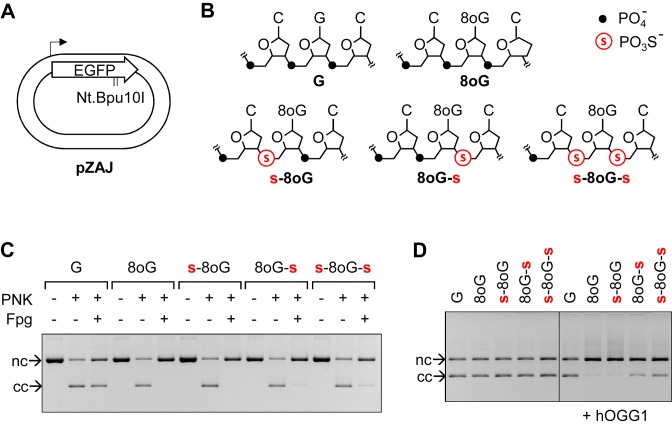Figure 1.
Construction of plasmid vectors containing the indicated DNA base (8-oxoG) and backbone (phosphorothioate) modifications in the non-transcribed strand of the reporter EGFP gene. (A) Out of scale scheme of the pZA expression vector showing the EGFP coding sequence (signed open arrow), transcription start (broken arrow) and tandem Nt.Bpu10I nicking sites used for site-specific insertion of synthetic oligonucleotides. (B) Overview of synthetic oligonucleotides and the contained modifications. (C) Verification of the incorporation of the indicated synthetic DNA strands into vector DNA. Inhibition of ligation reaction in the absence of polynucleotidekinase (PNK) is an indicator of the successful strand exchange reaction, as described previously (31). The presence of 8-oxoG is confirmed by DNA strand scission by bacterial Fpg. Positions of covalently closed (cc) and the nicked circular (nc) forms are shown. (D) Incision of plasmid vectors containing the specified DNA modifications with 0.5 units human OGG1.

